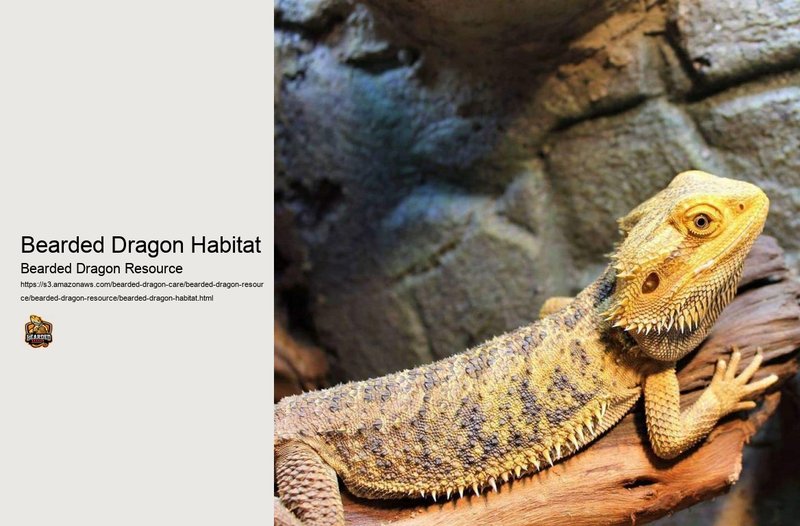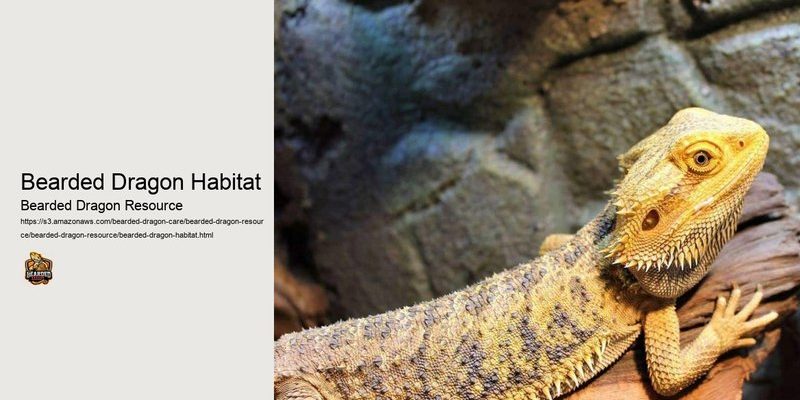
Bearded dragons are more than just cute pets; they play a vital role in their ecosystem. From controlling insect populations to serving as prey for larger animals, these lizards are essential for maintaining balance in their environment. Let’s dive into the different aspects of a bearded dragon’s life in the wild and understand why they matter so much.
Understanding Their Habitat
Bearded dragons are primarily found in the arid regions of Australia, especially in deserts and scrubland. Picture vast stretches of sandy soil, sparse vegetation, and the occasional rocky outcrop where these dragons can hide from predators. Their environment is harsh, with extreme temperatures and limited water sources. Yet, these lizards are perfectly adapted to survive.
Here’s the thing: Bearded dragons have a unique ability to regulate their body temperature by moving between sunny and shaded areas. They soak up the sun’s rays to warm up and seek shelter to cool down. This behavior helps them maintain their energy levels, which is crucial for their daily activities like hunting and basking. It’s like having a personal thermostat, ensuring they stay comfortable in an extreme environment.
Moreover, the vegetation they inhabit provides not only food but also protection. Plants like shrubs and low-growing trees offer hiding spots from potential threats. Without these natural elements, bearded dragons wouldn’t thrive, as they rely on both the flora and the fauna of their environment to survive.
The Bearded Dragon’s Diet
Now, let’s talk about what bearded dragons eat in the wild. These reptiles are omnivores, which means they enjoy a diet that includes both plants and animals. You might be wondering how this diet influences their role in the ecosystem. Well, it’s pretty significant!
In the wild, bearded dragons consume a wide variety of foods. They feast on insects, such as crickets and grasshoppers, and also munch on leaves, flowers, and fruits. This diverse diet helps regulate insect populations, making them a natural pest control solution. For example, a bearded dragon can eat dozens of crickets in one sitting, meaning fewer pests are buzzing around.
Here’s a fun fact: When food is scarce, bearded dragons can actually adjust their diet to focus on whatever is available. This adaptability is key to their survival, especially in dry seasons when their usual food sources might dwindle. Think of them as nature’s little recyclers, making the most of what the environment offers.
The Bearded Dragon’s Behavior
Bearded dragons are not just fascinating to watch; their behaviors are intriguing too. One common behavior is basking, where they absorb sunlight to warm their bodies and aid digestion. You might have seen them sprawled out on a rock or a branch, opening up their mouths a bit—this is not just for show. They’re regulating their temperature, ensuring they’re at their best for hunting later on.
Another interesting behavior is their social interactions. Bearded dragons can be territorial, especially during mating season. Males will puff up their beards and display head bobbing to assert dominance. It’s like a little dance-off in the wild! This behavior plays an important role in their mating rituals and helps maintain order within their social structure.
Interestingly, they exhibit some level of communication through body language. For instance, when relaxing, a bearded dragon might flatten its body against the ground. This can indicate comfort and a lack of threat. But when they feel threatened? They become alert, raising their body and puffing out their beards to appear larger. It’s a fascinating glimpse into how these creatures navigate their world.
Predators and Threats
Every creature has its place in the food chain, and bearded dragons are no exception. In their natural habitat, they face threats from various predators, including birds of prey, snakes, and even larger mammals. These predators keep the population balanced, preventing any one species from becoming too dominant.
To escape danger, bearded dragons rely on their remarkable camouflage skills. When they blend into their surroundings, they can avoid being seen by hungry eyes. Plus, their quick reflexes allow them to dart away when danger approaches.
However, not all threats come from wildlife. Habitat destruction due to urban development and climate change are significant issues that affect their survival. As their natural environments shrink, finding food and shelter becomes more challenging. This situation highlights the need for conservation efforts to protect their habitats and ensure these amazing reptiles continue to thrive.
Breeding Patterns and Lifecycle
The breeding habits of bearded dragons are also fascinating. The mating season typically occurs during the warmer months, from spring to early summer. Males will engage in various displays to attract females, including head bobbing and beard puffing.
Once a female is receptive, she will lay her eggs in a burrow, usually around 15 to 20 eggs. This is where her role in the ecosystem is crucial. By reproducing, she ensures the next generation thrives and continues the cycle of life. The eggs incubate for about 60 to 80 days before hatching, depending on the temperature.
Baby bearded dragons, known as hatchlings, are tiny and vulnerable, but they have to quickly adapt to their surroundings. They face numerous risks, including predation and competition for food. However, those that survive will grow into adults, contributing to the cycle of life in their habitat.
When we consider the role of the bearded dragon in its natural habitat, it’s clear they are more than just pets; they’re vital players in their ecosystems. From controlling insect populations to serving as prey for larger animals, their presence helps maintain balance in the environment. Their unique adaptations, social behaviors, and breeding patterns all contribute to their importance.
As we learn more about these amazing reptiles, it becomes increasingly important to support conservation efforts aimed at preserving their natural habitats. By doing so, we not only protect bearded dragons but also the intricate web of life they are a part of. So next time you see a bearded dragon—whether in the wild or at home—take a moment to appreciate the role they play in the great outdoors. Remember, every creature, big or small, helps shape the world we live in.

